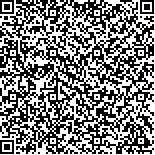附件
|
| 引用本文: | 刁瑞翔,青松,越亚嫘,郝艳玲,包玉海.北方半干旱区典型湖泊——岱海透明度遥感反演(2013—2020年).湖泊科学,2021,33(4):1072-1086. DOI:10.18307/2021.0410 |
| Diao Ruixiang,Qing Song,Yue Yalei,Hao Yanling,Bao Yuhai.A typical lake in the semi-arid area of northern China—The remote sensing retrieved of the transparency of the Lake Daihai (2013-2020). J. Lake Sci.2021,33(4):1072-1086. DOI:10.18307/2021.0410 |
|
| |
|
|
| 本文已被:浏览 4498次 下载 3542次 |

码上扫一扫! |
|
|
| 北方半干旱区典型湖泊——岱海透明度遥感反演(2013—2020年) |
|
刁瑞翔1, 青松1, 越亚嫘1, 郝艳玲2, 包玉海1
|
|
1.内蒙古师范大学地理科学学院, 呼和浩特 010022;2.内蒙古大学生态与环境学院, 呼和浩特 010021
|
|
| 摘要: |
| 水体的透明度是评价水质的重要指标,在水生态系统中起着重要的作用.借助遥感技术可以获得大范围、实时数据,并且有节省人力物力的优点.本文利用岱海的野外实测透明度数据和光谱数据,针对Sentinel-2 MSI和Landsat-8 OLI卫星数据波段设置,建立了岱海水体透明度反演模型.结果表明:1)本文建立的透明度反演模型中,蓝红波段比二次模型反演精度最好,决定系数R2=0.66,均方根误差(RMSE)为24.02 cm,平均绝对百分比误差(MAPE)为21.24%.2)将蓝红波段比二次模型应用于Landsat-8 OLI和Sentinel-2 MSI卫星数据,透明度反演精度较好,MAPE<28.82%,RMSE<23.26 cm,R2>0.60.3)此算法应用于时间序列MSI和OLI影像,得到了岱海水体透明度时空分布特征.结果表明,岱海水体透明度年平均变化范围在90.71~120.77 cm,2015年的平均透明度最高,2013年的平均透明度最低;月平均变化范围在90.68~122.53 cm,7月的平均透明度最高,5月的平均透明度最低.岱海透明度在空间上的分布趋势大致表现为西北高,东南低,中部高,四周低.4)影响岱海水体透明度变化的主要因素为风速和降水,透明度与风速和降水分别具有显著的负相关和正相关关系. |
| 关键词: 水体透明度 Sentinel-2 MSI Landsat-8 OLI 相关分析 遥感反演 岱海 |
| DOI:10.18307/2021.0410 |
| 分类号: |
| 基金项目:国家自然科学基金项目(41961057)、内蒙古自治区高等学校青年科技英才支持计划项目(NJYT-17-B04)和内蒙古自然科学基金项目(2019MS04013)联合资助. |
|
| A typical lake in the semi-arid area of northern China—The remote sensing retrieved of the transparency of the Lake Daihai (2013-2020) |
|
Diao Ruixiang1, Qing Song1, Yue Yalei1, Hao Yanling2, Bao Yuhai1
|
|
1.College of Geographical Science, Inner Mongolia Normal University, Hohhot 010022, P. R. China;2.School of Ecology and Environment, Inner Mongolia University, Hohhot 010021, P. R. China
|
| Abstract: |
| The transparency of water bodies is an important indicator for evaluating water quality and plays an important role in the water ecosystem. With the help of remote sensing technology, large-scale, real-time data can be obtained, and it has the advantage of saving manpower and material resources. According to the Sentinel-2 MSI and Landsat-8 OLI satellite data band settings, the Lake Daihai water body transparency retrieved model is established based on the measured transparency data and spectral data of Lake Daihai in this study. The results show that: 1) Among the transparency retrieved model established in this study, the blue-red band ratio quadratic model has the best retrieved accuracy than the quadratic model (R2=0.66, RMSE=24.02, MAPE=21.24%). 2) Applying the blue-red band ratio quadratic model to Landsat-8 OLI and Sentinel-2 MSI satellite data, the transparency retrieved accuracy is better (MAPE<28.82%, RMSE<23.26 cm, R2>0.60). 3) This algorithm is applied to MSI and OLI images, and the temporal and spatial distribution characteristics of the transparency of the Lake Daihai water body are obtained. The results showed that the average annual change range was 90.71-120.77 cm, the average transparency in 2015 was the highest, and the average transparency in 2013 was the lowest. The monthly range changed from 90.68 to 122.53 cm, the average transparency in July was the highest, and the average transparency in May was the lowest. The spatial distribution trend of Lake Daihai's water transparency is roughly high in the northwest, low in the southeast, high in the middle, and low in the central. 4) The main factors affecting the transparency of the Lake Daihai water body are wind speed and precipitation. The transparency and wind speed, precipitation have a significant negative correlation and positive correlation, respectively. |
| Key words: Water transparency Sentinel-2 MSI Landsat-8 OLI correlation analysis remote sensing retrieved Lake Daihai |
|
|
|
|